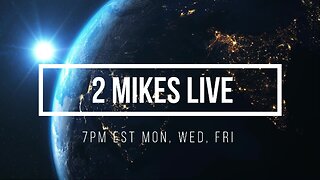Distro Monday 54: Choices, Choices, Choices...
DM 54.1 – Choices, Choices...
Should you stick with a point release like Debian, Ubuntu, or OpenSUSE Leap, or be daring and try a rolling release like Arch, Tumbleweed, or OpenMandriva Rome? It isn’t that clear-cut. Since when is anything, really? So what is the primary difference?
Rolling distributions constantly roll updates to core and other packages as soon as they become available. This can lead to instability, but if you want the latest and greatest from your hardware and software, this is the way to go. Upgrading is easy because when you install, you simply install the base OS, then it constantly offers updates to you. With an Arch based rolling distro, such as Manjaro or Garuda, my strong suggestion is to run updates at least once a week, so that it doesn’t stack up on you, leading to problems when you actually do update. It is also easier to upgrade, without weird instructions, due to this.
Fixed (point) Release distributions will likely release security updates between major upgrades, but other than that, your system will be stable between upgrades. This means that you will be at least 6 months behind your rolling release brothers and sisters in terms of the other packages in your distro’s repositories, generally. Now, if you choose to take a flatpak route for most of your apps, you will get updates for those packages as they are released on flathub, or whatever other mirror you may have used to install the flatpak. If you stick with Debs on Debian/Ubuntu, you will be behind everyone, however, as long as the current version (as of the release of your version) of your apps is to your liking, it will stay that way until your next upgrade.
As you can see, certain situations call more for stability vs raw performance and the latest and greatest. So it depends what matters to you. Are you the kind of person that likes the adventure of constant updates, or would you rather simply set it and forget it?
Next, we’ll be chatting about two Point Release distros: edubuntu and 4M Linux.
https://linuxiac.com/rolling-vs-point-release-linux-distributions/
#distromonday #whichkind #Linuxnews #FOSSNews #newdistro #TechFreedom
DM 54.2 – Edubuntu 23.04 Out Now
Edubuntu is an education-focused distro based on, you guessed it, Ubuntu. What makes this one different? Why is it making a comeback as an official flavor of Ubuntu after a near-10 year hiatus?
One question at a time, please... Ok, so it comes with a raft of educational software preinstalled, such as GCompris, Inkscape, Scribus, TuxPaint, Stellarium, and Calibre ebook reader, organizer, and editor. Not ones to get lazy, the team have also added LibreCAD, Gramps, Tux Typing Tutor, Dia, Chemtool, Gobby, Drawing, Light Speed, Fritzing CAD, Laby, PDF Mod, as well as many from the KDE Education Suite, a few games, and more.
Why is it making a comeback? The team at Canonical felt the need to roll it back out after so long as there is a need for solid education-focused distros now, more than ever.
https://9to5linux.com/first-look-at-edubuntu-23-04-ubuntu-desktop-packed-with-educational-software
#distromonday #edubuntu #FOSSNews #Linuxnews #Linux #education #forthekids #TechFreedom
Freedom Consultation
Free call.
60-90 minutes.
Q&A
Leave with Actionable Steps to take, whether you work with me or not.
Schedule today.
https://techfreedom.pro/freedom-consultation
#distromonday #freedom #consultation #Linux #degoogleyourlife #TechFreedom
DM 54.3 – What’s New in 4M Linux?
Well, the last 4 months have been jam-packed for the development team. When you see the list of programs added and updated, you’ll likely be surprised at this tiny but mighty independent distribution. Well, if you’re new around here, I should probably explain what 4M Linux is, 4M Linux is an independent distro designed to be lightweight and good at fulfilling the 4 M’s which the lead developer feels are necessary in any distro:
• Maintenance (system rescue Live CD)
• Multimedia (full support for a huge number of image, audio and video formats)
• Miniserver (DNS, FTP, HTTP, MySQL, NFS, Proxy, SMTP, SSH, and Telnet)
• Mystery (meaning a collection of classic Linux games)
This version has some new bells & whistles versus the older versions. Key internal differences include the latest LTS kernel and the Mesa 22.2.3 graphics stack to handle the multimedia end of things.
As for the bells & whistles:
• A raster graphics editor and Hex-a-Hop video game as downloadable extensions,
• AlsaPlayer,
• Baka MPlayer,
• GNOME MPlayer,
• GNOME MPV
• mp3blaster
• XMMS as a default media player
Now about updated apps:
• LibreOffice 7.5.2 office suite
• Mozilla Firefox 111
• Chromium 106.0.5249.91
• Mozilla Thunderbird 102.8.0
• GIMP 2.10.34
• VLC 3.0.18
• SMPlayer 22.2.0 video player
• Audacious 4.3 audio player
• AbiWord 3.0.5 word processor
• Gnumeric 1.12.55 spreadsheet editor
One thing that makes this lightweight distro stand out, though, is that it also has a server flavor called 4MServer, which includes the standard LAMP stack tools and has been updated alongside the main distro, with the latest stable versions of Apache server, MariaDB, and PHP.
https://9to5linux.com/independent-distro-4mlinux-42-released-with-linux-kernel-6-1-lts
#distromonday #Linux #4MLinux #4MServer #lightweight #fast #oldhardware #newhardware #FOSSNews #TechFreedom
-
 2:00
2:00
We The Free News
5 months agoGoogle Data Rescue (step 5 of 5 Steps clip)
170 -
 2:02:24
2:02:24
Kim Iversen
11 hours agoDems Scheme To Remove Biden | Which Candidate Is The LEAST Genocidal | Crypto, Gold Or Bust
78.1K152 -
 2:01:13
2:01:13
TimcastIRL
10 hours agoNY Times Calls For Biden TO DROP OUT, Democrats PANIC Over Debate w/Morgonn McMichael | Timcast IRL
123K163 -
 1:34:49
1:34:49
Glenn Greenwald
12 hours agoDebate Forces Corporate Media to Admit Biden Impairment After Months of Lies; SCOTUS, Including Justice Jackson, Overturns Excessive Jan. 6 Prosecutions | SYSTEM UPDATE #291
141K295 -
 1:11:18
1:11:18
Edge of Wonder
12 hours ago“But Wait There’s More” is No More: Massive Mandela Effect & MTV News Gone
92.9K50 -
 37:05
37:05
Candace Owens
1 day agoOUCH! Tucker Carlson Embarrasses The Australian Press | Candace Ep 14
168K182 -
 11:13
11:13
barstoolsports
12 hours agoDAVE PORTNOY QUESTIONS WILL COMPTON'S DECISIONS | VIVA TV
110K8 -
 21:25
21:25
BetterBachelor
1 day agoFull on PANIC, the leftist activist news tears are flowing like rain
104K230 -
 1:44:34
1:44:34
2 MIKES LIVE
13 hours ago2 MIKES LIVE #84 OPEN MIKE FRIDAY
77.1K9 -
 1:15:59
1:15:59
The Big Mig™
1 day agoThe Hunt For January 6th, SCOTUS Torpedoes J6 Obstruction Charge
73K27